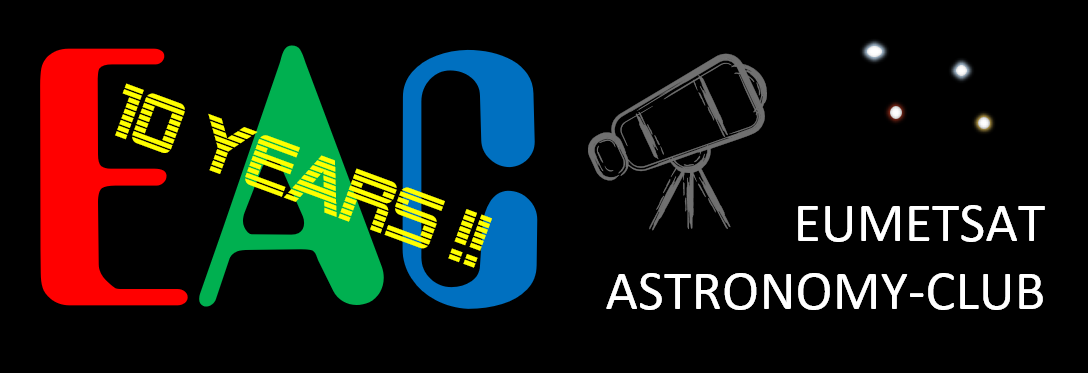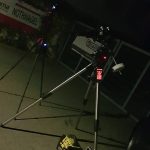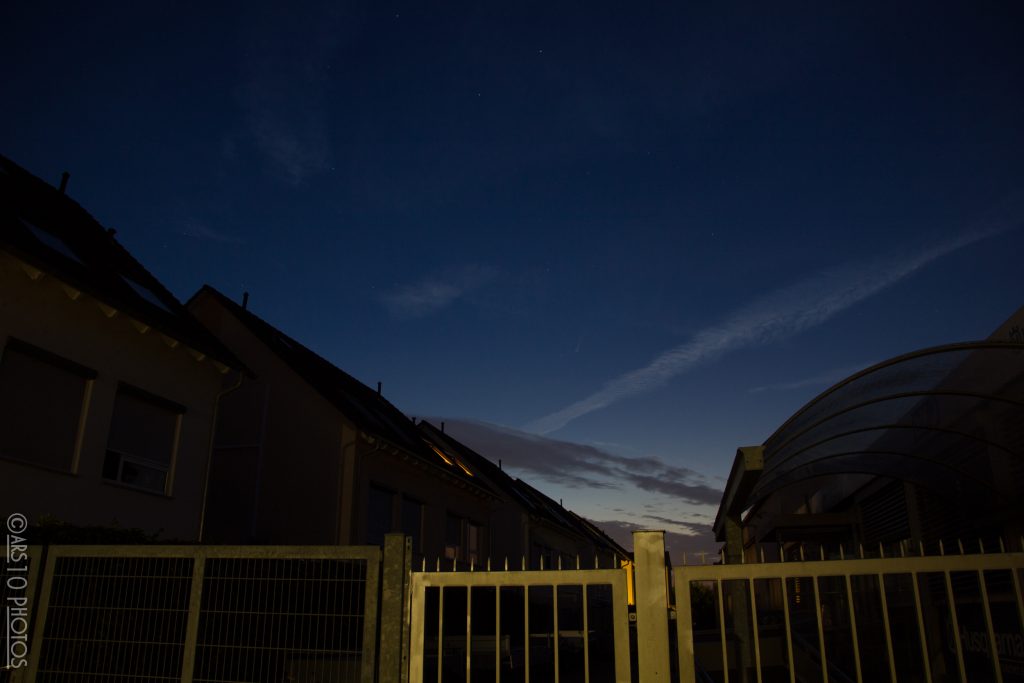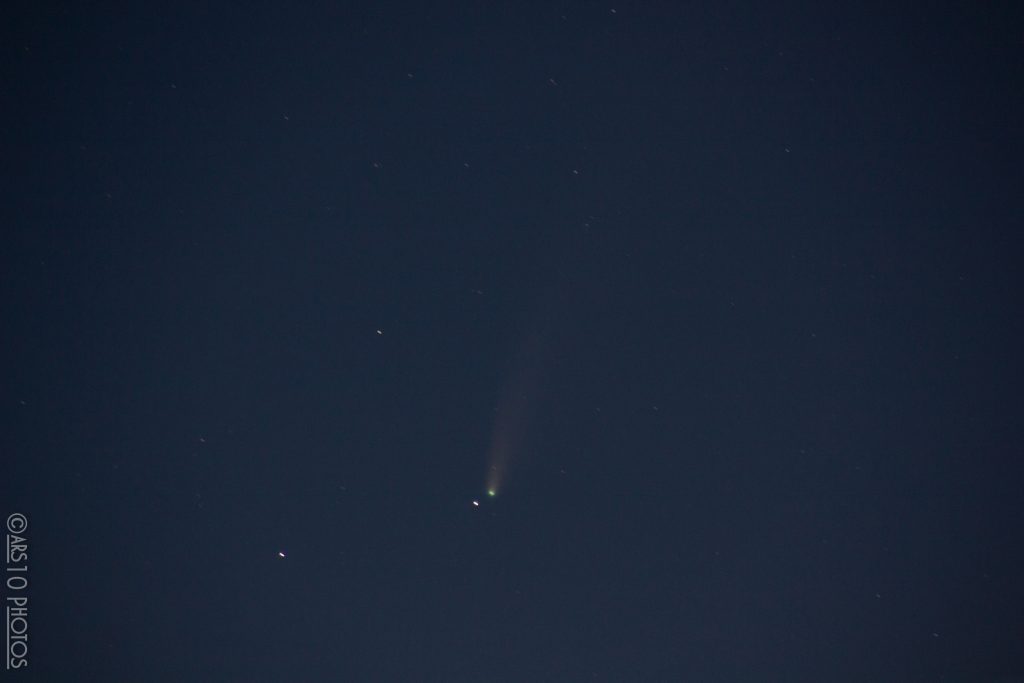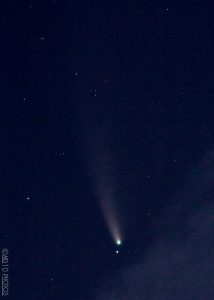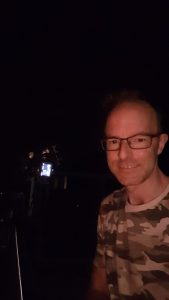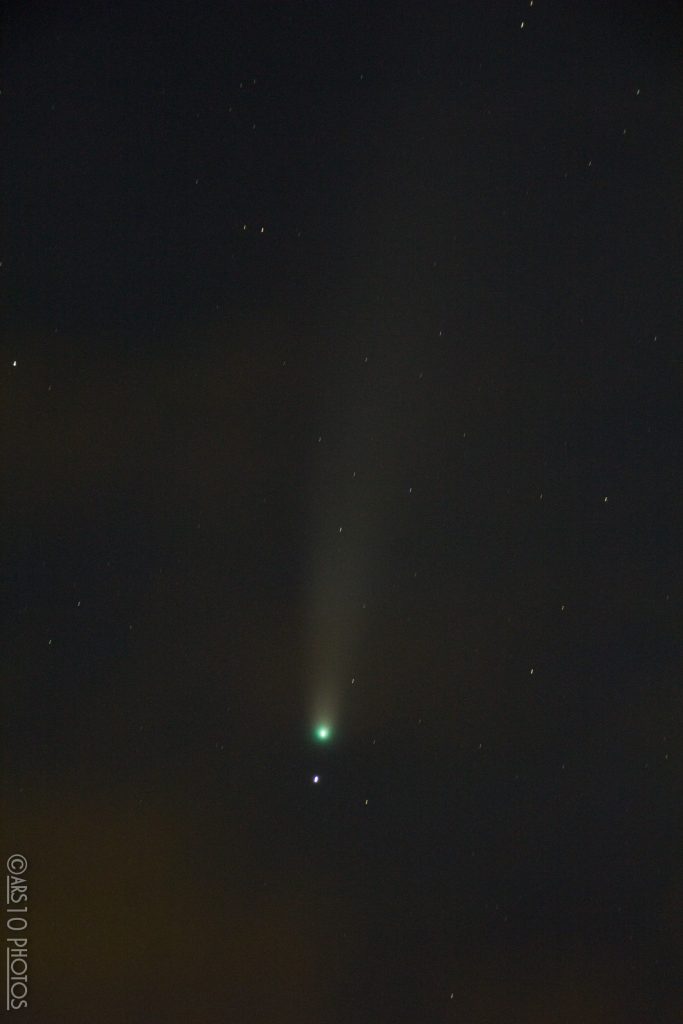18 July – About time
Towards the evening, it looked more like a lot of moisture piling up and doing the usual seeing=0 problem. But the causal check turned out to reveal hope after 10pm! Troubled with stomach ache, I dragged myself out with only camera and simple tripod…anything to see?…..Where is it?….Well, not dark enough so a little more patience…Binoculars?….Crap, misaligned and making me dizzy *lol*…still trying….
At 10:45 I can finally make out traces on a wide angle photo – GET THE EQUIPMENT!
Starting with my tracking mount – rough Polaris alignment (…really…rough), hook camera and …ehm…find a star to focus….with tracking mount and the L-track, it is not easy to aim as this setup is quite static.
So, some layers of high clouds are threatening to close in, let’s try a good photo and turn the camera to portrait for the tail
The photo to the right was slightly processed using Adobe Lightroom Classik (6.x). Mostly:
- Histogram:
- Black -83
- Exposure +1.14
- Lights -59
- White +29
- Clarity: +30 (harder edges/contrast)
The previous picture has been cropped out and slightly enhanced, too. The star next to the comet was helpful It is Talitha – or 9 UMa – a side star of the Big Dipper!
What is left? Of course a photo through the telescope! My APO Chromat ED80 from TS (a lens telescope with lots of light power, but does not magnify much) is perfect for wide angle views and big objects or areas (Moon, big galaxies…comets).
I did a series of photos, but most were behind a haze of transparent cirrus clouds…..this means, I need to try again some other night, but….still good enough with little help from Lightroom and post-processing:
You wanted more? The comet….MOVES!!!
